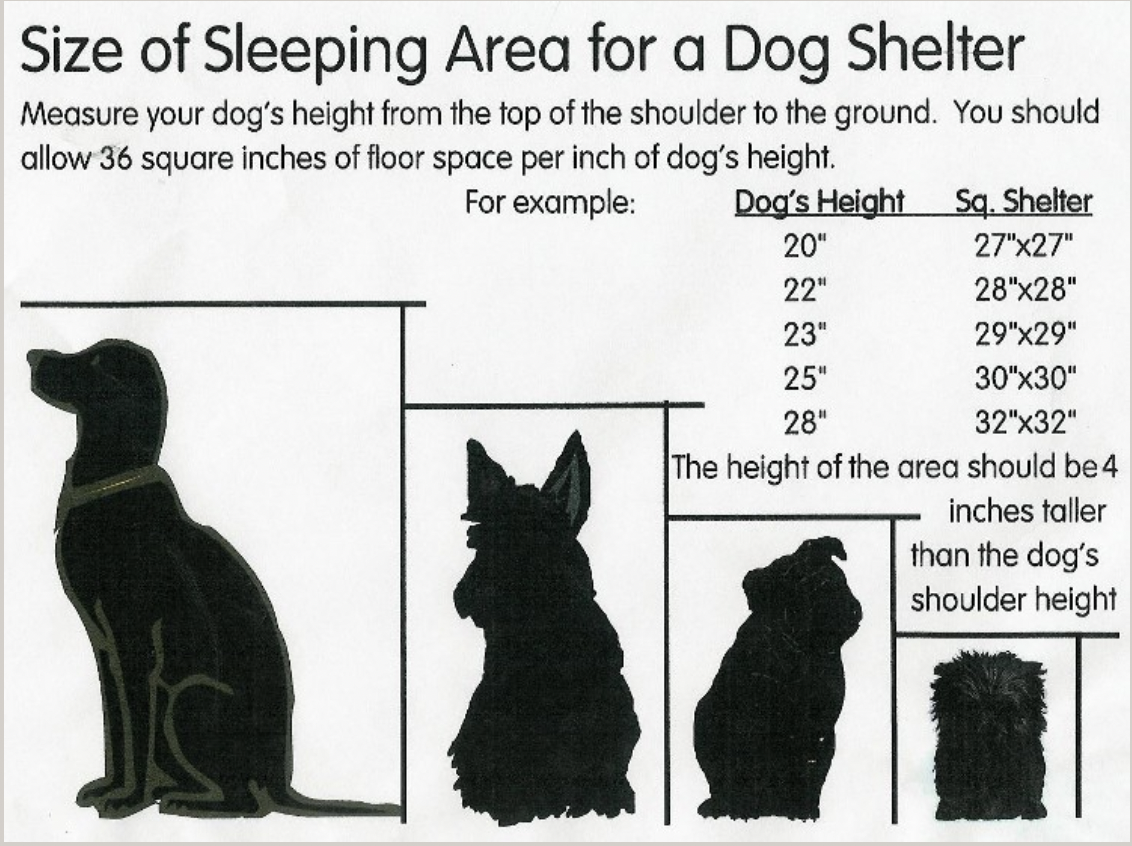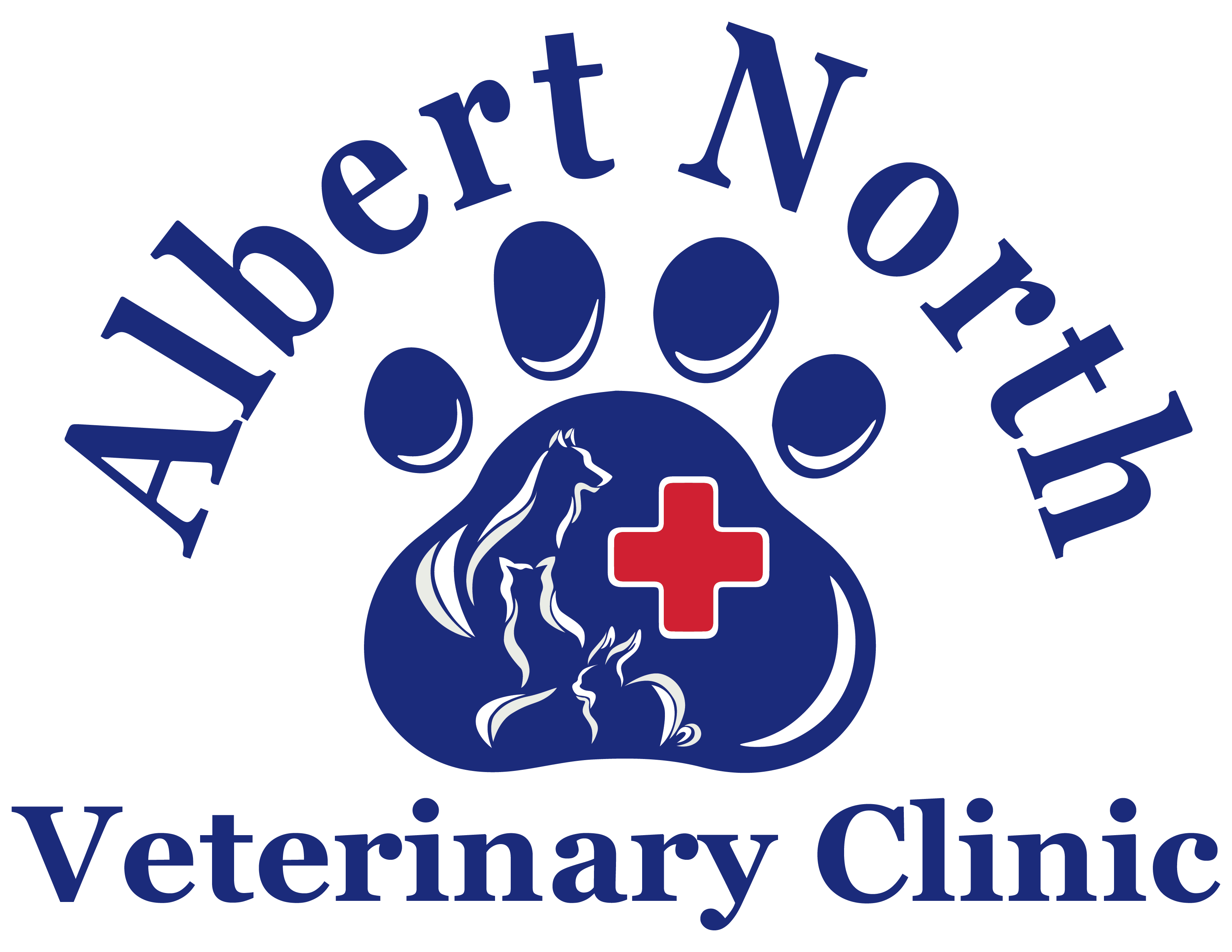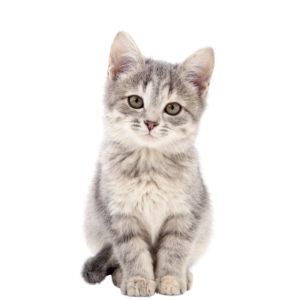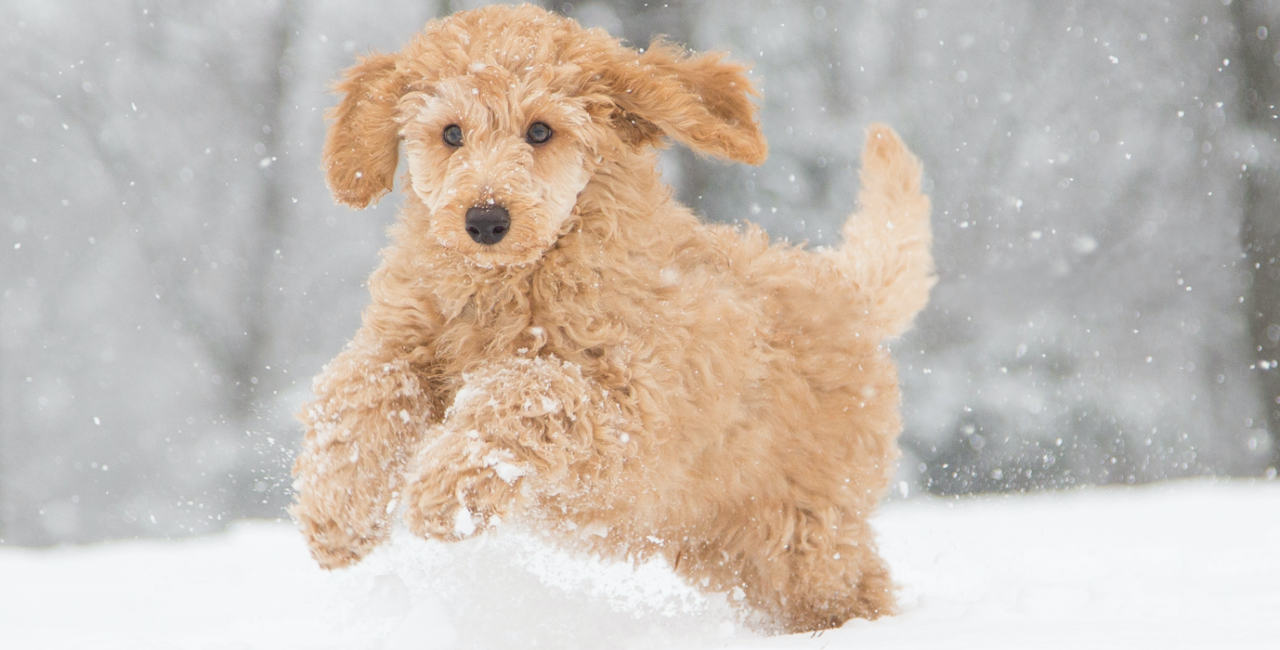We all know Saskatchewan winters can get awfully cold with temperatures well below -30 degrees Celsius plus windchill. Due to these extreme conditions it is even more important to take precautions with our pets during the winter season. Frostbite can occur in minutes to ears, feet and pads. Outdoor cats should either be kept indoors during the winter or provided with adequate shelter outdoors. See the guidelines below (the same information applies to making a shelter for your cat as for your dog).
Although some breeds of dogs are developed to live in the cold young puppies should not be left unsupervised outside as their ability to tolerate the cold (regardless of breed) is far less than an adult.
Potential Dangers
With the cold comes the danger of cats and other wildlife curling up in warm engine spaces to get out of the cold. Knocking on your hood before starting your engine will help to avoid injuring an animal that may be been trying to get out of the cold.
Many animals like the taste of antifreeze and will readily consume it when given the opportunity. However, antifreeze , even in the smallest amounts, can have a very harmful and often fatal effect on your pet. If you think your pet may have consumed antifreeze please contact the clinic immediately.
With fall & winter comes other holiday hazards to be aware of:
- Turkey bones (or any bone) should not be given to pets. Cooked bones can splinter, which become a medical emergency.
- Overeating/Garbage Eating. This is one of the main causes of stomach upset in pets over the holidays and can turn into more than just a tummy ache. Many older pets may develop a very serious condition called pancreatitis from overindulgence during the holidays. If you want to let your pet enjoy Thanksgiving and Christmas dinner please make sure they only get a very small amount of lean, low fat table food as a treat. Make sure the garbage with the turkey carcass or ham bone is well secured and out of Fido`s reach.
- Chocolate, especially the darker varieties with higher cocoa content, can be dangerous. The risk of serious problems varies widely with the type and amount of chocolate consumed in proportion to the dogs weight. Keep an eye on the Halloween candy! If you are concerned please call the clinic.
- Sugar Free gums containing the artificial sweetener xylitol are especially harmful. As little as 1-2 pieces of gum can cause a potentially fatal hypoglycemia or liver failure in dogs. Please contact the clinic immediately if you think your pet may have ingested gum with xylitol in it.
- Tinsel, angel hair and tree ornaments are often very enticing to pets. However if ingested can be very harmful. Secure your tree and keep ornaments out of your pets’ reach.
- Some holiday plants are poisonous. Mistletoe, Holly, Ornamental Peppers and Christmas Rose should be kept out of reach of pets – especially birds that may go after the fruits. Poinsettias are not poisonous, however pets are often sensitive to the latex found in the plants’ stems and leaves. Eating these may cause vomiting and/or diarrhea.
If your pet ingests any potentially harmful or dangerous item(s) please contact us immediately 306-545-7211.
Adequate Shelter for Winter
For Cats:
A simple, reasonably inexpensive cat shelter is to use a styrofoam cooler with some straw or blankets (however blankets have to be changed often as the will get wet and hold the cold). The hole for the entry need not be large – just big enough for a cat to squeeze through. If the entry is too big, too much cold air or even snow will get inside reducing the shelter’s effectiveness. Place the shelter up on a couple bricks or pieces of wood so it is not against the cold ground. Air that circulates below will, as snow accumulates become warm. Place the shelter in a position that best keeps the wind off the entry. Below are two ideas for how to create a styrofoam shelter. It is probably best in our weather to insert a styrofoam cooler inside the larger plastic container rather than using a second smaller plastic container. You may also want to consider moving the entry up higher, the plastic pot is a good idea to help reduce any wind and snow from getting inside the shelter. You can use duct tape around the cut edge of the pot to ensure the edges are not sharp.
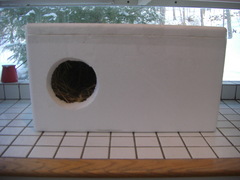
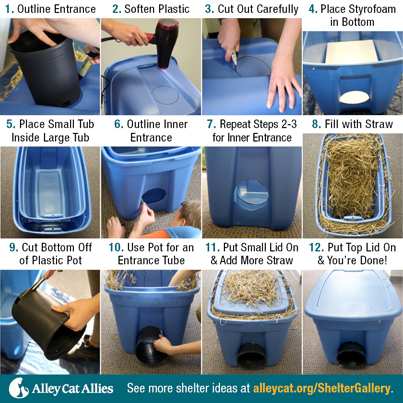
For Dogs:
The rule of thumb for shelter size is a structure large enough for the dog to walk into, turn around and lay down, BUT small enough for the dog to heat with its body. The structure must be insulated in some form so as to be capable of maintaining the heat generated by the animal. A shelter with a heat source may be larger.
The shelter entrance should be just large enough to allow the dog access. An entrance should be approximately 1 1/2 times the width of the dog and the height of the opening should allow the dog easy access, but care should be taken that the shelter opening is as small as possible. The entrance should have a 3-6 inch lip at the bottom. This helps keep the elements out and bedding in. If the opening has already been cut to the floor a lip can easily be added by nailing a 3-6 inch board to the bottom of the opening.
A carpet, canvas, or rubber flap should also be added over the entrance allowing the dog in and out of the shelter while providing additional help to keep bedding and warmth in and the elements out.
Blankets and carpet may retain moisture. If these are used they should be changed every day or so – especially if the weather is warmer and the snow is melting. Straw and wood chips may also be used as bedding. A layer of about 5-6 inches deep is best. This kind of bedding should be changed every few weeks.
Finish off your dog’s shelter with a weatherproof material or paint to give additional protection from the elements.
